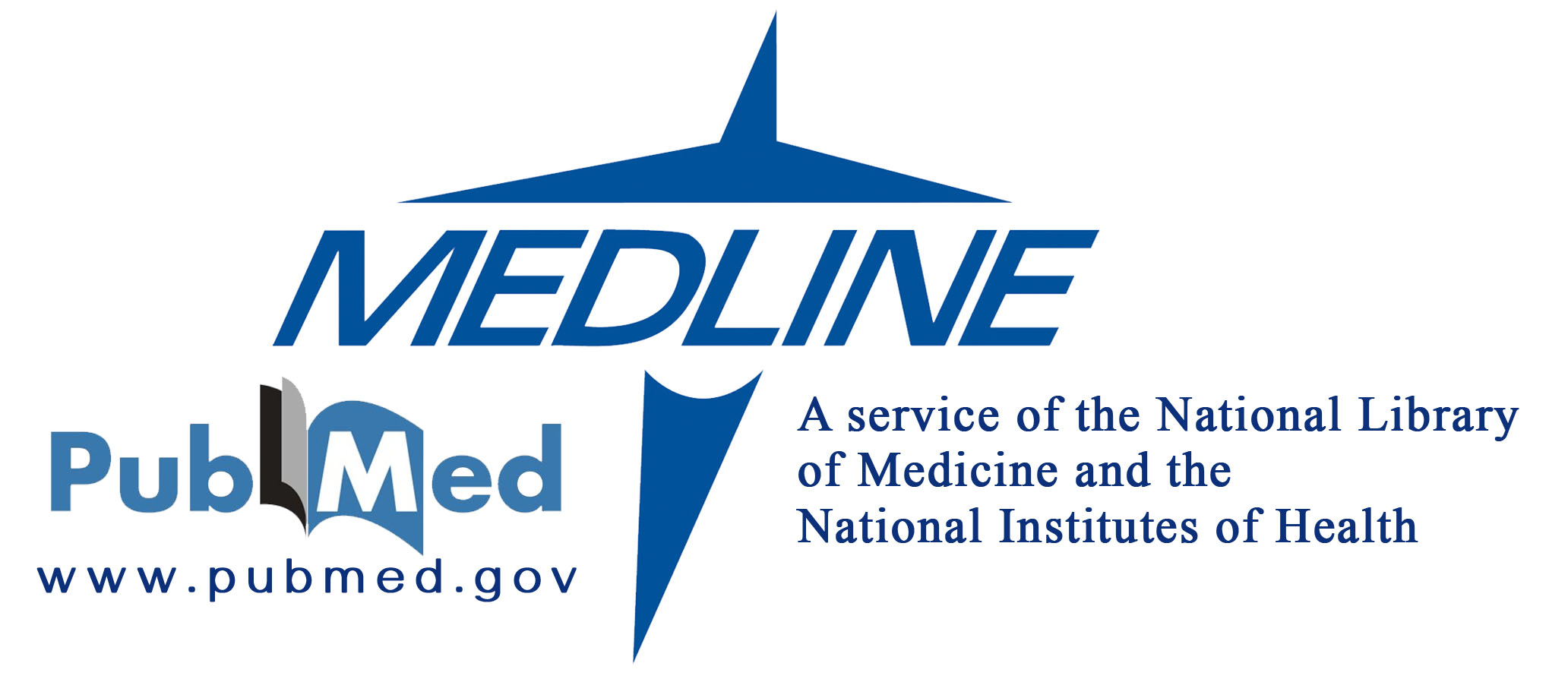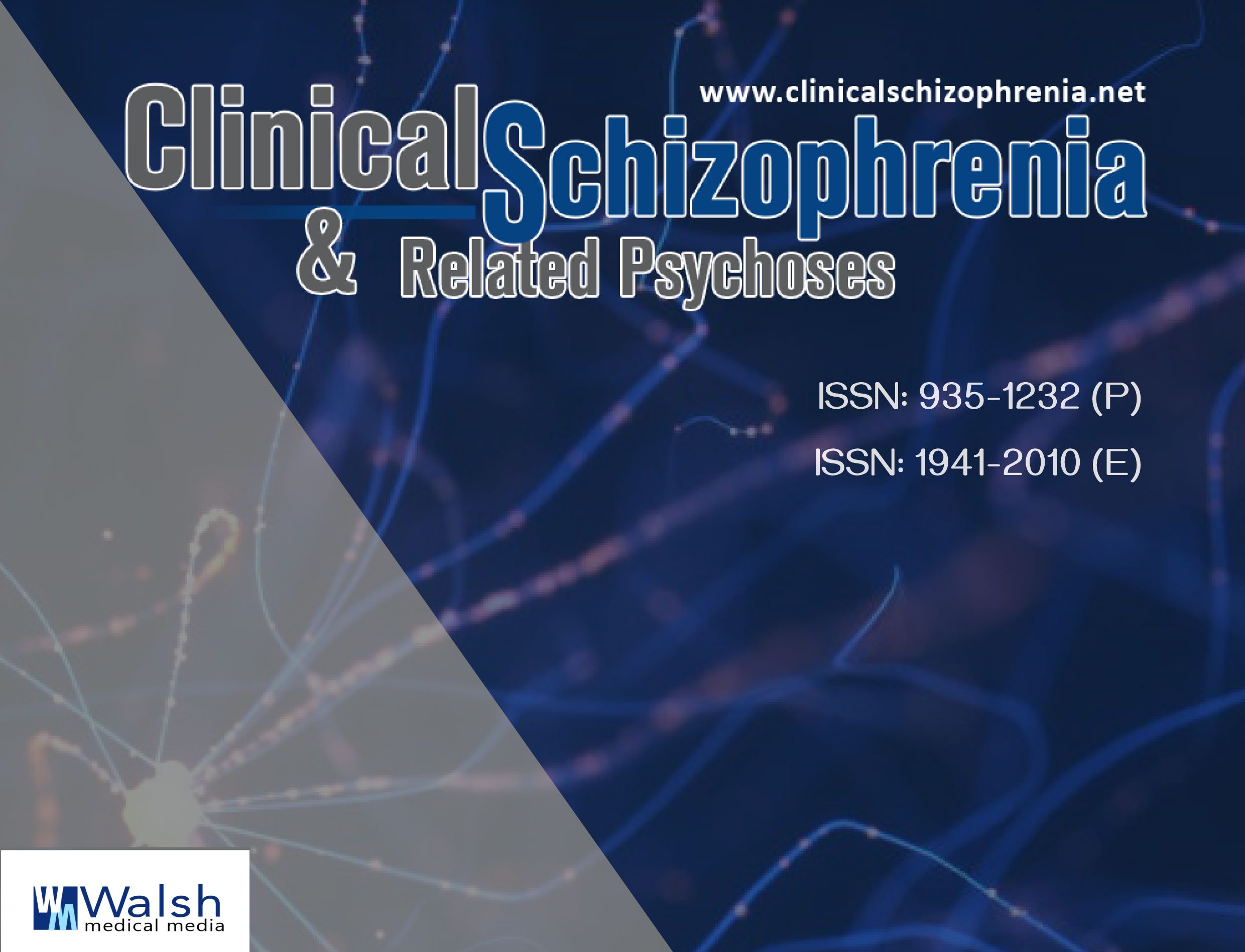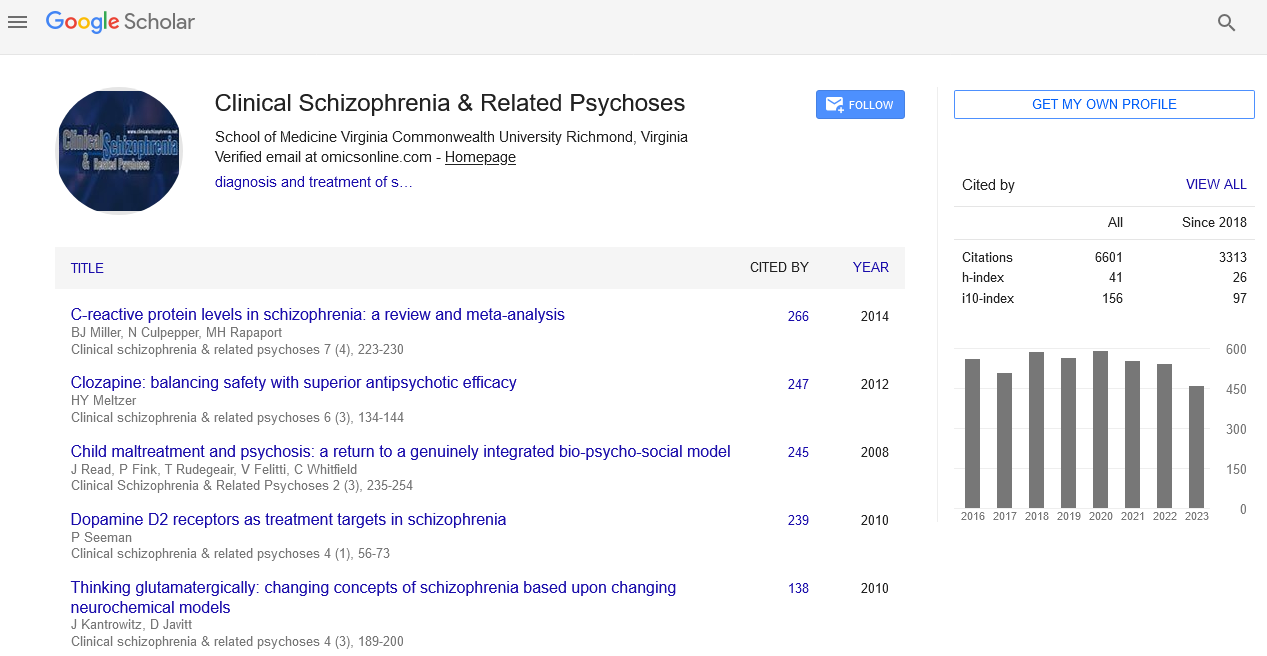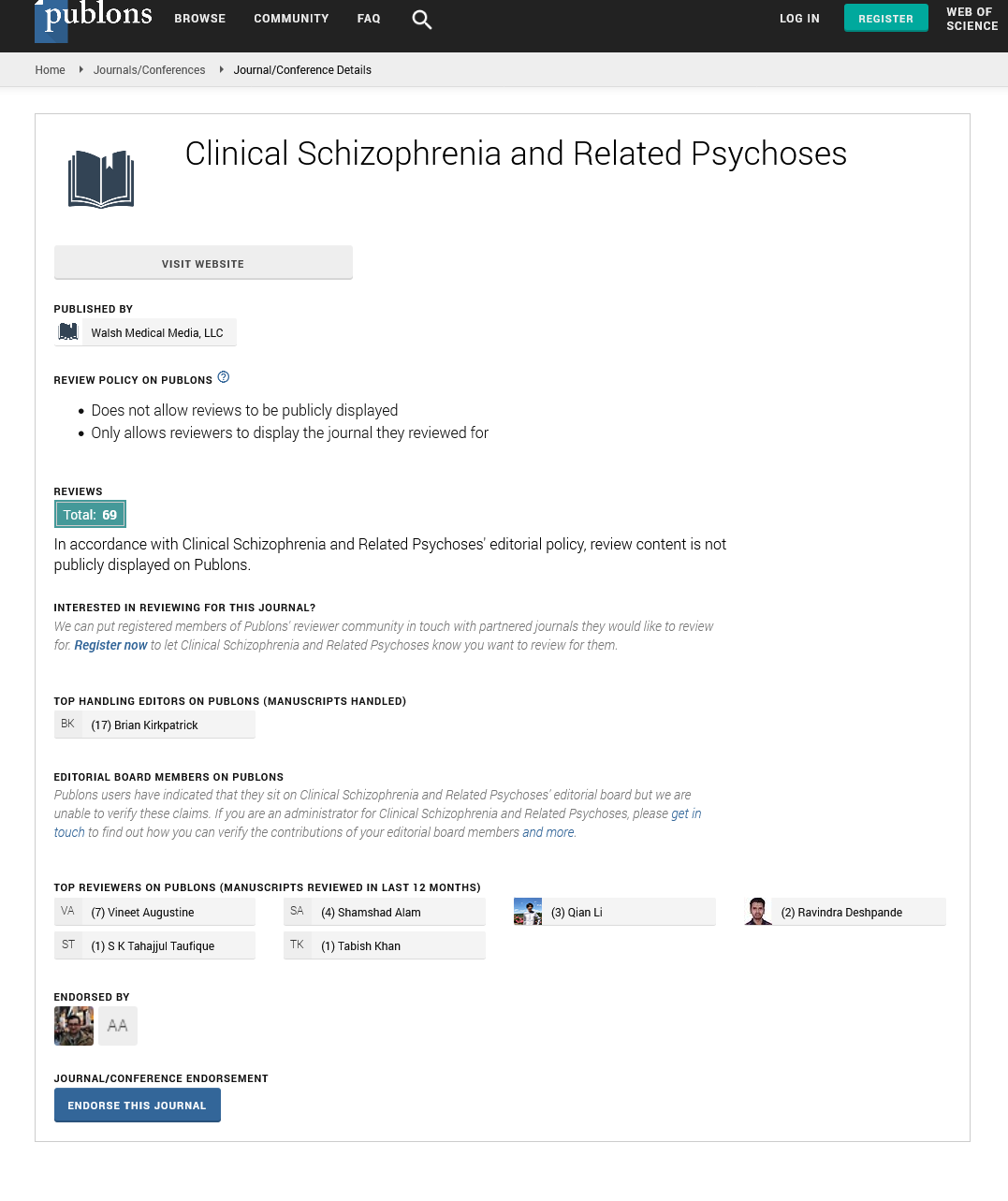Information for Authors
Clinical Schizophrenia & Related Psychoses (CS) is a peer-reviewed quarterly journal providing psychiatrists and other physicians and healthcare professionals with clinical information relevant to the diagnosis and treatment of people suffering from schizophrenia, bipolar disorder, and other severe mental illnesses. CS is a practice-oriented publication covering the latest research, clinical trials, case reports, and advances relevant to the complete treatment of people suffering from schizophrenia, bipolar disorder, and related psychoses.
Editorial Policies
Manuscripts must be written in English and submitted with the understanding that they have not already been published elsewhere and are not under simultaneous consideration by other journals. All matters relating to CS' editorial policies should be addressed to Professor Peter F. Buckley, Editor-in-Chief, Clinical Schizophrenia & Related Psychoses Editorial Offices, Virginia Commonwealth University, McGlothlin Medical Education Center, 1201 East Marshall Street, 4th Floor, Suite 4-100, Richmond, Virginia 23298.
CS supports The Code of Ethics of the World Medical Association (Declaration of Helsinki) for experiments involving humans; authors may be required to provide tangible proof that the necessary permissions and consents were obtained from study participants. Manuscripts reporting the results of experiments involving laboratory animals must contain a statement indicating that the procedures used were in accordance with internationally accepted principles.
Manuscript authors must disclose in a letter to the Editor-in-Chief any potential financial conflicts of interest, including any financial relationships with commercial companies involved with a product under study. All sources of funding for work being reported must be disclosed as an acknowledgment in the text.
All authors will be asked to transfer copyright of all articles accepted for publication to Walsh Medical Media, LLC. This transfer will ensure the widest possible dissemination of the article's contents. If excerpts from other copyrighted works are included in an accepted submission, the author(s) must obtain written permission from the copyright owners and credit the source(s) in the article.
Prior to publication, all authors will be required to sign a transfer of copyright form and a conflict of interest form.
Types of Articles
(Word limits exclude Abstract, References, Figures and Tables)
Original Contributions (2,500 – 5,000 words)
Present results of original clinical research that are relevant to the treatment of schizophrenia, bipolar disorder, and related psychoses. Include a structured abstract and a brief summary of clinical relevancy.
Case Reports (1,000 – 2,000 words)
Describe treatment or outcome of a single case or a small series of cases. Case reports should focus on important clinical situations, unusual clinical phenomena, new treatments, and new complications. Include an abstract.
Comprehensive Reviews (2,500 – 5,000 words)
Gather, describe, and assess prior publications on key clinical subjects related to schizophrenia, bipolar disorder, and related psychoses; includes analysis and conclusions. Include an abstract.
Current Clinical Trials (1,000 – 2,000 words)
Describe current ongoing clinical trials, including rationale, enrollment criteria, treatment plans, and anticipated results.
Translational Medicine (2,500 – 5,000 words)
Present basic research that has clinical applications. Coverage should include a description of the development of the basic research and a presentation of the basic research data, as well as data obtained from human samples or patients. An analysis of the implication of the research regarding treatment of schizophrenia, bipolar disorder, and related psychoses should be included. Include an abstract.
Clinical Concepts, News and Commentary (1,000 – 2,000 words)
Provide news that warrants quick dissemination to clinicians. There will be a focus on new developments, clinical issues that are new or controversial, important news from recent national and international meetings, and brief book reviews.
Letters to the Editor (under 1,000 words)
Article Processing charges for Clinical Schizophrenia & Related Psychoses is 2519 Euros.
Publishing Standards and Collaboration Policy
The journal actively collaborates and partners with reputed third-party journals and publishers to facilitate DOI assignment, content linking, and indexing across diverse platforms. This ensure maximum visibility and discoverability of your work. However, in alignment with international standards for science, technology, medicine and business publishing, the original copyright exclusively resides with our journal and its contributors. We are dedicated to protecting your authorship rights while enhancing the global impact and reach of your research.
Author Withdrawal Policy
From time to time, an author may wish to withdraw his/her manuscript after submission. Changing one's mind is an author's prerogative and an author is free to withdraw his/her article at no charge as long as the article is withdrawn before acceptance. After an article is accepted, the processing is initiated. Hereby if an article is withdrawn after its acceptance, a mandatory amount of post-processing fee is levied on the article.
The withdrawal of the manuscript should be done within 5 days of initial submission. At this publication, the final stage of withdrawal requires withdrawal charges of 1491 euros, If the withdrawal charges are paid, so that the article will completely remove from journal database.
Manuscript Preparation and Submission
Manuscripts submitted to CS should adhere to the “Uniform Requirements for Manuscripts Submitted to Biomedical Journals” promulgated by the International Committee of Medical Journal Editors (http://www.icmje.org/).
General Principles
Authors are requested to submit manuscript at Online Manuscript Submission System or send as an e-mail attachment to the Editorial Office at clinicalschizophrenia@emedsci.com. The manuscript must be typed, double-spaced, utilize 12 point type, and have 1" margins all around. The manuscript text (including tables) should be prepared using a word processing program and saved as an .rtf or .doc file. All pages should be numbered consecutively, beginning with the title page; all manuscript copies must include a complete set of tables, figures, and legends.
Title Page
Should include: the complete title of the manuscript; a running head not to exceed 50 characters (including spaces); the full name of each author and the author's institutional affiliation; the corresponding author's name, address, telephone, fax, and e-mail address; a word count for the text only (excluding abstract, acknowledgments, figure legends, and references); the number of tables and figures.
Abstract and Key Words
The abstract should provide the context or background for the paper and should state the paper's purposes, basic procedures (selection of study subjects or laboratory animals, observational and analytical methods), main findings (giving specific effect sizes and their statistical significance, if possible) and principle conclusions. Provide three to ten key words or short phrases that capture the main topics of the paper. These key words will assist indexers in cross-indexing the article and may be published with the abstract. Terms from the Medical Subject Headings (MeSH) list of Index Medicus should be used.
Text
Introduction: Provide a context or background for the paper (i.e., the nature of the problem and its significance). State the specific purpose or research objective of, or hypothesis tested by, the paper.
Methods: Describe the selection and description of participants, including eligibility and exclusion criteria and a description of the source population; identify the methods, apparatus, and procedures in sufficient details to allow others to reproduce the results; describe statistical methods used. Note: authors submitting review manuscripts should include a section describing the methods used for locating, selecting, extracting, and synthesizing data. These methods should also be summarized in the abstract.
Results: Present the results in logical sequence in the text, tables, and illustrations, giving the main or most important findings first. Where scientifically appropriate, analyses of the data by variables such as age and sex should be included.
Discussion/Conclusion: Emphasize the new and important aspects of the study and the conclusions that follow from them. Link the conclusions with the goals of the study, but avoid unqualified statements and conclusions not adequately supported by the data.
Acknowledgments
Include the names of all funding and logistical support organizations/individuals.
References
References should be numbered consecutively in the order in which they are first mentioned in the text. Identify references in text, tables, and legends by Arabic numerals in parentheses.
For reference style the International Committee of Medical Journal Editors recommends the ANSI standard adapted by the National Library of Medicine (NLM). For samples of reference citation formats, authors should consult the National Library of Medicine web site (http://www.nlm.nih.gov/).
Tables, Figures, and Legends
Tables must be created with the table function of the authors’ word processing program; spreadsheets are not acceptable. Type or print each table with double spacing on a separate sheet of paper. Number tables consecutively in the order of their first citation in the text and supply a brief title for each; give each column a short or abbreviated heading; place explanatory matter in footnotes, not in the heading.
Figures should be either professionally drawn and photographed, or submitted as photographic quality digital prints. CS would prefer all figures as electronic files (JPEG or GIF format) with resolution greater than 300 dpi.
Type or print out legends for figures using double spacing, starting on a separate page, with Arabic numerals corresponding to the figures; define any abbreviations found in the figure.
Manuscript Review
All manuscripts are subject to peer review, typically two in number. Usually one reviewer is a member of the CS' Editorial Board; the second reviewer is an outside expert selected for his/her expertise in the submission's subject matter. Authors may suggest potential reviewers; however, all reviewer designations are at the sole discretion of CS’ Editor-in-Chief.
Manuscript Proofs
PDF-format galley proofs of accepted manuscripts will be sent by e-mail to the corresponding author. The author must check proofs carefully and only make necessary changes due to typesetting errors. No changes in the accepted manuscript will be allowed at this point. Proofs must be returned within two days of receipt by the corresponding author; CS reserves the right to proceed with publication if corrections are not communicated.
Clinical Schizophrenia & Related Psychoses (CS) www.clinicalschizophrenia.net






